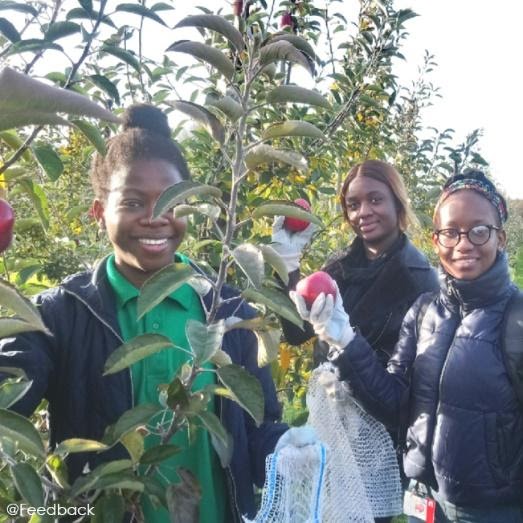Meeting carbon reduction targets will require some significant changes to the way that most people live. Not all of these changes will be popular. Demonstrating the co-benefits of climate action can be helpful in winning hearts and minds and facilitating the transition to a low carbon economy. In this section, we provide some examples of how co-benefits could be used to help overcome objections from different groups of citizens to specific measures.
Who might object?
- Local businesses
- Car and taxi drivers
Co-benefits
- Better air quality and health
- Increased active travel
- Customers stay longer at local businesses as no parking worries
- Reduced visual and noise pollution
- Safer travel to school
- Better physical health for children
- Cleaner neighbourhoods
- Lower congestion
- Reduced congestion
- More pleasant town centres
- Reduce businesses’ need for city centre storage
- Time and cost savings for businesses
Case studies and examples
- Waltham Forest case study
- Nottingham case study
- City of York Council
- Birmingham City Council
- See also: Toolkit Chapter 3
- Sciennes example
- Sustrans example
Who might object:
- Local residents
- Parents
Co-benefits
- Safer travel to school
- Better physical health for children
- Cleaner neighbourhoods
- Lower congestion
Case studies and examples
- Sciennes example
- Sustrans example
Who might object?
- Businesses
Co-benefits
- Reduced congestion
- More pleasant town centres
- Reduce businesses’ need for city centre storage
- Time and cost savings for businesses
- Reduced void days
- Reduced rent arrears
Case studies and examples
- Southampton case study
- Zedify example
Who might object?
- Landlords
Co-benefits
- Reduced void days
- Reduced rent arrears
Case studies and examples
- Liverpool case study
Who might object?
- Parents, children, decision-makers
Co-benefits
- Better quality of food for spend
- Better health
- Children learn about climate action and healthy lifestyles
- Inclusion and cohesion
Case studies and examples
- Leeds case study
- The Swan School example
Who might object?
- Unlikely to face any objections
Co-benefits
- Tackling youth unemployment and deprivation
- Build skills to create demand and capacity within the green economy
Case studies and examples
- Our Bright Future example
- Repowering example
Restrictions on private car use
Reducing private car use delivers both cleaner air (due to reduced pollution) and an increase in active travel (walking and cycling). Both have substantial impacts on the health and wellbeing of local citizens, with far reaching benefits felt on local and national scales.
Currently, private car use as a major cause of air pollution is having a worrying impact on health. For further detail on the link between health, travel and air quality, see Chapter 3 of this toolkit.
Closing streets near schools at the start/end of school day
In 71% of UK towns and cities, children are breathing dangerous levels of air pollution. 3.1 million children in England attend schools in areas where air pollution exceeds World Health Organisation limits. Children are exposed to more toxic levels of air pollution on their journeys to school than at any other part of their day. The impact of this daily exposure may include stunted lung growth and increased risk of asthma.
There are important co-benefits associated with the closure of main roads near schools at start/end times. These include immediate improvements to children’s respiratory health by directly reducing their exposure to particulate pollution; improved road safety and reduced risk of child road injuries; improved physical fitness and wellbeing for both pupils and parents walking, cycling or scooting to school; cleaner and more attractive neighbourhoods.
Example: Sustrans School Streets in Southampton
A school streets programme working with local authorities and developing plans that gain local support.

Business communities and freight changes / restrictions
In 2020, the business sector was responsible for 18.2% of the UK’s total carbon emissions. As customer habits have changed with the expansion of online retail, the requirements of domestic freight and logistics have soared and so has their environmental footprint.
Changes to the way that goods are moved around our towns and cities represent an excellent opportunity for local environmental action whilst offering considerable co-benefits to businesses and citizens alike. Fewer freight vehicles on the roads reduces congestion and improves air quality, making town centres more pleasant places to be whilst also improving road safety and limiting traffic accidents.
Options for restricting freight include the introduction of Ultra Low Emission Zones (ULEZ), which restrict road access (via charges and fines) for vehicles that do not meet exhaust emissions standards.
Another option is Urban Consolidation Centres (UCC). These allow for the consolidation of goods at a single site, away from an urban area, for loading onto separate vehicles for final delivery. This increases the efficiency of the logistics sector, reducing the number of poorly loaded delivery vehicles in urban settings. UCCs also create the opportunity for environmentally friendly vehicles such as electric vehicles and e-bikes to complete the final leg of the required journey.
UCCs offer businesses economic co-benefits by reducing their need for city centre storage units, reducing the time spent handling goods from multiple carriers and allowing for more efficient purchasing practices.
Ashden’s 31 climate actions for councils tool identified the establishment of UCCs as having considerable carbon savings potential. A 20% reduction in freight emissions would deliver an annual reduction in carbon of 4,400 tonnes in a town of 100,000 people. Ultimately, a reduction of up to 80% could be achieved if there was full coverage and uptake of UCCs linked to restrictions imposed by the council on freight traffic.
Minimum energy efficiency standards in the private rented sector
In 2020, 20.8% of total UK CO2 emissions resulted from the residential sector, much of which relates to energy used for heating. Improving energy efficiency is key in tackling the climate and health burdens caused by the housing sector. Access to affordable warmth delivers substantial co-benefits in terms of equity as well as health. Further information on health and housing can be found in Chapter 3 of the toolkit.
The Minimum Energy Efficiency Standards (MEES) system was introduced via legislation to reduce fuel poverty and improve energy efficiency within the private rented residential sector. MEES specifies that privately rented properties that are rated F or G on their Energy Performance Certificate should be improved to a minimum of E in order to be rented out.
Historically, privately rented properties have often been the least efficient, with little apparent incentive for landlords to invest in energy efficiency as it is their tenants who will reap the benefit of lower fuel bills. However, there is evidence that improving the energy efficiency of households delivers a range of benefits to landlords in the long term. For example, there is a strong correlation between the energy efficiency of homes and the number of void days (periods of non-occupancy), with properties with an Energy Performance Certificate ranking of B remaining void for 31% fewer days than properties of bands E and F and, consequentially, causing significant economic losses for landlords.
Furthermore, rent arrears, which occur when residents fall behind with paying their rent to landlords, are greater in energy inefficient properties. Those with an F rating see an average of two weeks extra arrears than properties of higher grades, whilst grade A properties saw 30% fewer arrears. Improving the energy efficiency of properties directly reduces fuel bills meaning tenants are better able to pay rent. This can potentially reduce rent arrears and improve the profitability of housing to landlords. On top of this, time spent chasing late rent payments, legal and court costs falls by 35% for properties of higher energy efficiency grades.
Case Study: Liverpool – Minimum Energy Efficiency Standards
Landlord engagement and licensing create warmer homes for Liverpool’s renters.

Increasing plant-based meals in schools
For the UK to be genuine in its attempts to meet 2050 carbon neutrality targets, the UK Committee on Climate Change recommends that Britons should aim to reduce their meat intake by 20% by 2030 (and 35% by 2050). With almost 9 million children currently in the British school system, adopting plant-based menus represents a fantastic opportunity to deliver on these targets.
A switch to meat-free meals also offers the opportunity to educate children on the benefits of eating fruit and vegetables as part of a healthy lifestyle, as well as educating them about behavioural change and climate action. Schools can provide higher quality, more nutritious meals for the same budget by incorporating meat alternatives. A plant-based menu is also inclusive; it allows all pupils to eat the same meals irrespective of religion or dietary requirements – another co-benefit.
Reduced consumption of meat reduces a school’s carbon footprint and increases its sustainability. Ashden’s 31 climate actions for councils tool identified that introducing plant-based meals in schools would save around 580 tonnes of carbon dioxide per annum in a town of 100,000.
Case Study: Leeds – Planet Friendly school menus
Leeds City Council cuts carbon with greener school meals

Example: The Swan School
Offering exclusively plant-based menus, improving school sustainability, quality of food and pupil inclusion at lunch time.

Opportunities for young people
Young people aged 16-25 tend to favour climate action and view climate change as an important issue directly affecting them. A survey led by Bath University found that 72% of young people in the UK worry about the future of the planet.
At the same time, the unemployment rate for 16–25-year-olds is 11.1% compared to a rate of 4.1% for the UK at large. Climate action and the transformation to a green economy will require citizens to obtain specific knowledge and skills to drive this transition. However, there is a risk of alienation if jobs in carbon-intensive sectors disappear but training and skills opportunities necessary to support work in green sectors do not become widely available. This challenge is particularly acute in the wake of the coronavirus pandemic.
Currently, many young people across the UK simply do not have access to the employment and education opportunities they need to thrive. Providing appropriate training opportunities for young people will both harness their passion for the environment and enable a more successful transition to a greener economy, by making them better prepared to fulfil the new jobs that will be vital for successful climate action. Chapter 4 of this toolkit discusses the link between climate action, the economy and skills in further detail.
Example: Our Bright Future
An innovative partnership led by The Wildlife Trusts helping young people gain vital skills and improve their wellbeing while delivering change for their local community and contributing to a greener economy.

More Information
On economy and skills in Chapter 4 of this toolkit
Previous Section:
2.2 Working with community groups to deliver carbon reduction
Next Section:
2.4 Examples

